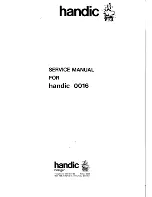
Banner Engineering Corp., 9714 Tenth Ave. No., Minneapolis, MN USA 55441 • Phone: 763.544.3164 • www.bannerengineering.com • Email: [email protected]
Step 2: Apply Power
The FlexPower MultiHop radios operate when powered from the brown or gray wire. It is not necessary to supply
power to both.
Apply power to the radios by connecting the cable as shown in the wiring diagram.
Step 3: Bind the Radios to Form Networks
Binding MultiHop radios to the master radio ensures the MultiHop radios only exchange data within their wireless network. MultiHop radios will
not communicate until they are bound. Bind the radios before installing them to their final locations.
On the Master radio
1. Triple-click button 2 to enter binding mode. For models with only one button, triple-click the button.
For the two LED/button models, both LEDs flash red. For single LED/button models, the LED flashes alternatively red and green.
On the Repeater or Slave radios
2. Triple-click button 2 on the slave/repeater radio. For models with only one button, triple-click the button.
The child radio enters binding mode and searches for any Master radio in binding mode. While searching for the Master radio, the two
red LEDs flash alternately. After the child radio finds the Master radio and is bound, both red LEDs are solid for four seconds, then both
red LEDs flash simultaneously four times.
3. Use both rotary dials to assign a decimal MultiHop Radio ID between 11 and 61. The left rotary dial represents
the tens digit (1–6) and the right dial represents the ones digit (0–9) of the MultiHop Radio ID.
4. Repeat steps 2 and 3 for as many slave or repeater radios as are needed for your network.
On the Master radio
5. After all MultiHop radios are bound, exit binding mode on the master by double-clicking button 2. All radio devices begin forming the
network after the master data radio exits binding mode.
Step 4: Verify Communications
When testing the devices before installation, verify the radio devices are at least two meters apart or the communications may fail.
LED 1
LED 2
Status
Green on, then green flashing
Slave/repeater: entering RUN mode
Green flashing
Master: in RUN mode
Slave/repeater: synchronized to the parent radio
Red on
Slave/repeater: detected parent radio and searching for other parents within range
Red flashing
Slave/repeater: searching for a parent radio
Amber on
Slave/repeater: selects a suitable parent
Master: power applied
Amber flashing
Slave/repeater: serial data packets transmitting between radio and its parent
Master: serial data packets transmitting between master and its children
Red on
Slave/repeater: synchronizing to selected parent radio
Red flashing
Sure Cross® MultiHop Quick Start Guide
A set-up guide for the Sure Cross MultiHop wireless systems
WARNING . . . Not To Be Used for Personnel Protection
Never use these products as sensing devices for personnel protection. Doing so could lead to serious injury or death.
These devices do NOT include the self-checking redundant circuitry necessary to allow their use in personnel safety applications.
A device failure or malfunction can cause either an energized or de-energized output condition. Consult your current Banner Safety
Products catalog for safety products that meet OSHA, ANSI, and IEC standards for personnel protection.
Stop!
Read these instructions before using your Sure
Cross MultiHop radios. Do not discard these
instructions.
For more detailed information about installing and using your Sure Cross products, download and
read the Sure Cross Wireless I/O Network Manual, p/n 151317.
Step 1: Select the Master, Repeater, and Slave Radios
Before beginning operation, you must select one radio to be the master radio. Set the other
MultiHop radios to operate as either repeaters (default setting) or slaves.
1. Remove the top covers of the MultiHop radios.
2. Set one unit to be the master radio.
3. Set the other MultiHop radios to be repeaters or slaves.
4. Set additional DIP switches now. (See the DIP switches section of your specific
devices’ datasheets for the positions and descriptions. Battery-powered radios may
have different DIP switch settings than shown below.)
p/n 152653 Rev. C
DIP Switches
7
8
Repeater (default)
OFF
OFF
Master
OFF
ON
Slave
ON
OFF
Default configuration
DIP Switches
1
2
3
4
5
6
Serial baud rate: 19.2k
OFF
OFF
No parity
OFF
OFF
1 Watt transmit mode (900 MHz only)
OFF
Modbus application mode
OFF
5-pin M12
connector pin
“C” model
terminals
Wire color
10-30 V dc powered
radios*
Solar or battery-powered
radios**
1
V+
Brown
+10–30 V dc
3
V-
Blue
dc common (GND)
dc common (GND)
5
B+
Gray
3.6–5.5V dc
* Only use pin 5 (gray wire) for radios capable of being powered by solar or battery modules.
** For solar and battery-powered radios, do not apply more than 5.5 V dc to pin 5 or the B+ terminal.
For the communication pin configuration or more details, refer to your specific devices’ datasheets.
Important: Never Operate 1
Watt Radios Without Antennas.
To avoid damaging the radio circuitry, never power up
Performance or MultiHop (1 Watt) radios without an antenna.
1
4
5
3
2




















